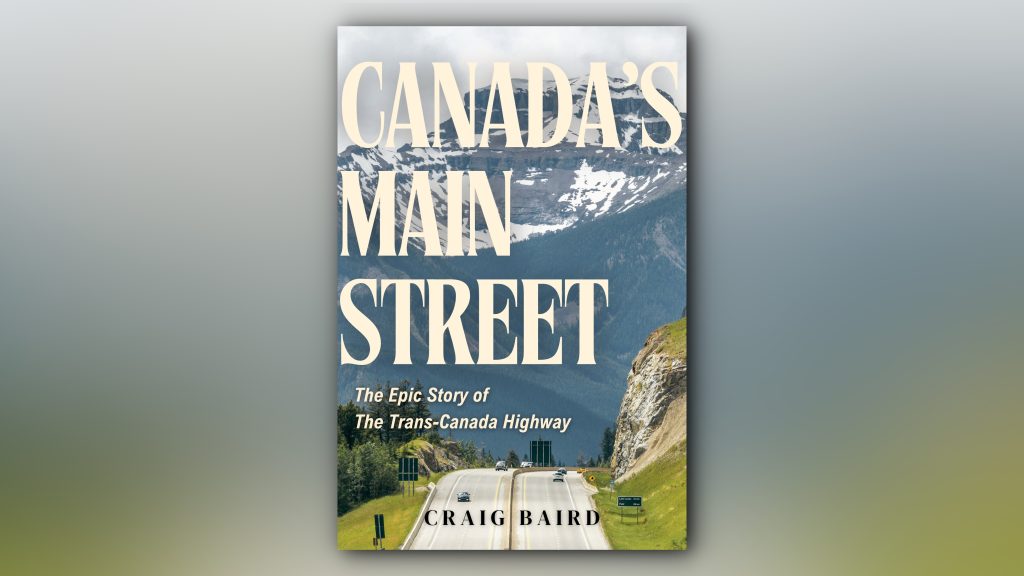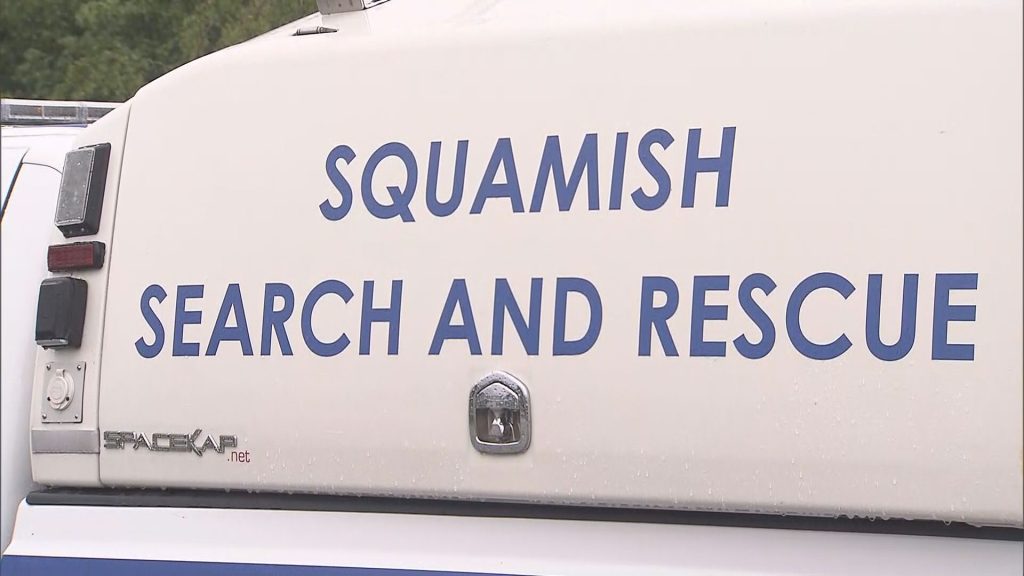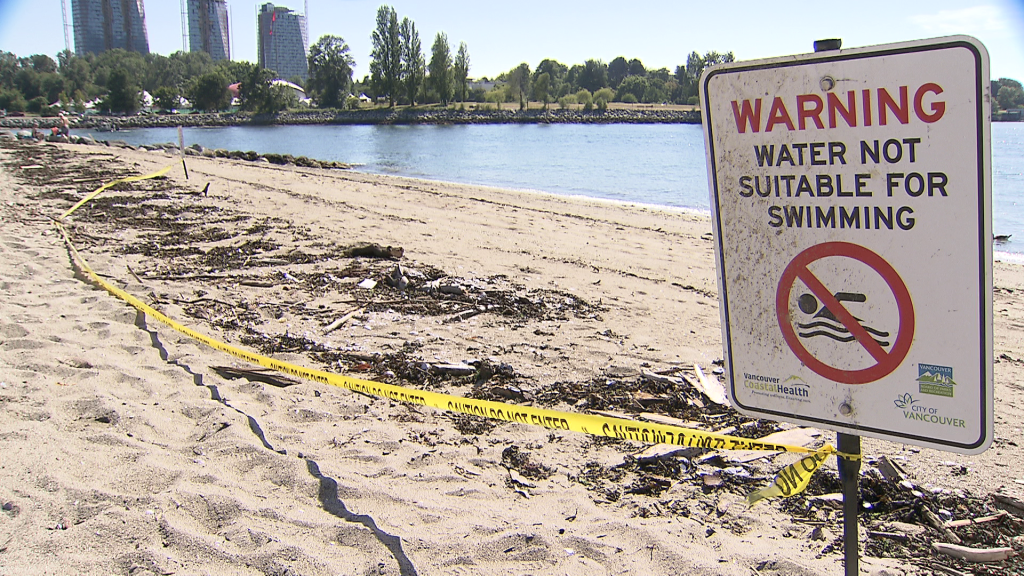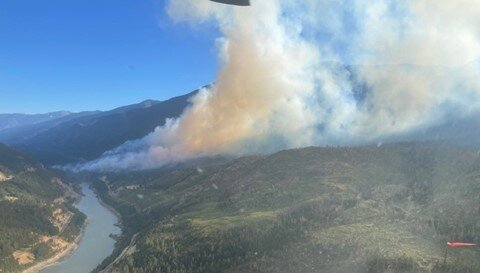Craig Baird feels there is something reassuring in knowing that the Trans-Canada Highway even exists.
“I used to live in a community called Gull Lake, Sask., and from my front yard, I would be able to see the Trans-Canada Highway,” he said. “And there is an odd comfort to it at night, when you see those lights on the highway, and it tells you that everything is all right, everything is moving, [that] civilization is going strong.”
Baird, who hosts the podcast Canadian History Ehx, says he was motivated to write Canada’s Main Street: The Epic Story of the Trans-Canada Highway because he feels it continues to live in the shadow of the Canadian Pacific Railway.
“The Trans-Canada Highway cost more, it took far longer to build, and it had just as many difficult areas to build through,” he said.
“It may not have the cachet the CPR has in our history, but it definitely deserves that, as it helped Canadians explore their country. It’s something I think people need to celebrate more.”
Baird says he took his inspiration from the late Pierre Berton, specifically his two-volume history of the CPR, The National Dream and The Last Spike.
“We have so much that is written about the CPR and the building of the transcontinental railway, but not as much about the building of the Trans-Canada Highway. And I felt like the Trans-Canada Highway was just something that was very much overlooked, but it’s something that every Canadian has been on, likely multiple times. I mean, some people take it to work, but it’s also a big part of any kind of summer road trip, and we tend to just not think about it.”
“I just wanted to give more light to a big moment for Canada and our history,” he said.
Read more:
Baird deftly takes the reader on a time-travelling road trip back to when those who wanted to drive from one end of the country to the other had to cross into the United States.
“And even the roads that did go across Canada [at the time] were very poor. So, we take for granted how beautiful the Trans-Canada Highway is, how wide open it is, and how flat and maintained it is, because before the 1950s, it was not easy to drive across Canada.”
Baird points out that the Americans had completed their coast-to-coast road, the Lincoln Highway, as early as 1913. However, there wasn’t much support for a national highway in Canada until the Second World War, when it became not only a matter of economic stimulus but of national security. The Alaska Highway, between Dawson Creek, B.C., and Fairbanks, Alaska, was built in a matter of months in 1942. While it wasn’t very good at first, it showed how quickly a major road project could be done with the proper motivation.
The post-war period would provide that motivation, as well as plenty of opportunities for nation-building projects. As Baird put it:
The 1950s were dawning. It was an optimistic, do-anything time for Canadians, a decade that would see them undertake three great construction projects: the St. Lawrence Seaway, the Trans Canada Pipeline, and the Trans Canada Highway.
“Tourism is starting to become a thing [too],” he said. “You start to see that Canada wanted to keep more of those tourists in Canada. We wanted people to be able to drive coast to coast.”
Construction of the Trans-Canada Highway would finally start in 1949, but it seemed no one could agree on which way it should go. Baird looks at all the wrangling that went into planning the route.
“When you’re building across Canada, there are some areas where it’s just a given, like Quebec City to Montreal; that’s obvious,” he said.
“[But] things start to get a bit dicey when you get into the Prairies, especially after Manitoba, because at this point, there are multiple routes that the Trans-Canada Highway could take. It could either go through Saskatoon or Regina into Alberta, and then in Alberta, it would either be Edmonton, Calgary, or Lethbridge. So now you have three possible routes.”
B.C.’s portion of the Trans-Canada would travel from Kicking Horse Pass to Kamloops, and from there down the Fraser Valley and across the Georgia Strait to Nanaimo before heading south on Vancouver Island to Victoria, but even that wasn’t a given.
“On the East Coast, everybody wanted to be Mile Zero because there is a tourist aspect to that, and that is something you can latch on to to draw people to your community. And Tofino felt like it was the best bet for that. But it was a foregone conclusion that Victoria would be the end of the Trans-Canada Highway because it’s the capital. The Trans-Canada essentially starts in the capital of Newfoundland and ends in the capital of British Columbia.”
In the closing chapter of the book, Baird explores the greater meaning of the highway as a force for national unity.
“You know, you can fly across Canada and do it quickly, or you can drive across and see the historical sites and roadside attractions and stop in at local diners and really explore Canada. And you have this beautiful highway that’s existed for over half a century now that allows you to do this so easily,” he said.
Ultimately, Baird feels the Trans Canada isn’t just a highway but a seven-thousand-kilometer lifeline.
As the name implies, Canada’s Main Street truly is an epic story and well worth reading. Canada’s Main Street: The Epic Story of The Trans-Canada Highway is published by Sutherland House.





